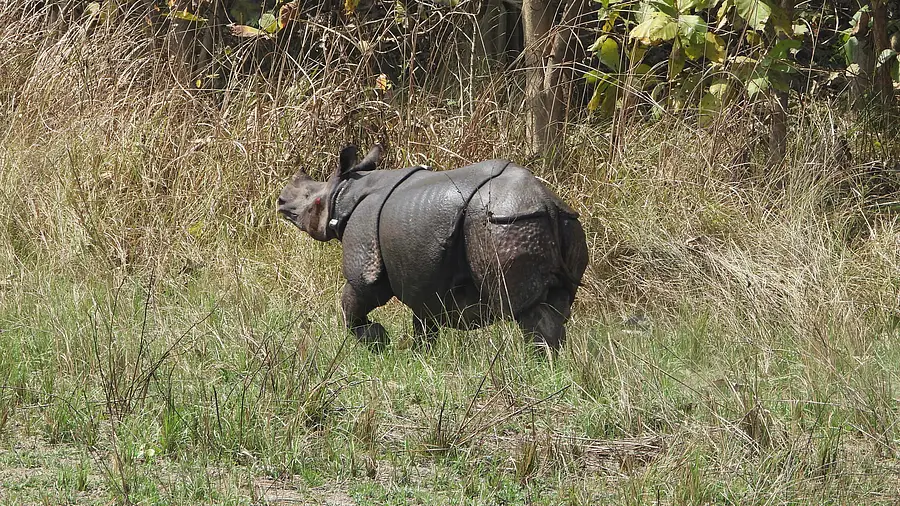 |
| Indian rhinoceros |
The Indian rhinoceros stands as one of India’s most captivating creatures, sharing the spotlight with the majestic tiger and the mighty elephant. Once roaming widely from northeast India to Pakistan, the species now primarily thrives in the Terai grasslands of India and Nepal, following a dramatic decline in its numbers. Thanks to dedicated conservation efforts, the population has made a remarkable recovery, with the majority of rhinos now residing in protected areas across Assam’s Brahmaputra Valley, northern West Bengal, and southern Nepal. A noteworthy chapter in their conservation story unfolded in Uttar Pradesh’s Dudhwa National Park, where the species was reintroduced four decades ago. Unlike their counterparts in places like Kaziranga, Jaldapara, and Chitwan National Parks, the 46 rhinos in Dudhwa were initially confined to a 27-square-kilometer rehabilitation enclosure. However, in a major breakthrough in November 2024, the Uttar Pradesh forest department released two female and one male rhino into the wild, followed by the release of another pair, bringing the free-roaming rhino population to five. Equipped with the help of trained elephants and their mahouts, experts successfully monitored, tranquilized, and safely relocated the rhinos after carefully checking their health. A seasoned forester explained that the long wait was due to factors like Dudhwa’s proximity to the India-Nepal border, rhinos entering agricultural areas, and the park’s size, which made it difficult to release them earlier. The goal, originally, was to establish a sustainable base population before gradually releasing rhinos in batches. With the enclosure now reaching its capacity, Principal Chief Conservator of Forest Sunil Chaudhury emphasized that these translocation efforts would not only help restore the wild rhino population but also expand their habitat and minimize the risk of inbreeding.
 |
| Dudhwa National Park |
It’s truly inspiring to witness the flourishing rhino population in India, and even more so to see the continuous effort to bring this magnificent species back to the Terai region. Dudhwa National Park has become the epicenter of this groundbreaking conservation initiative, which traces its roots back to 1984, when the ambitious plan to reintroduce rhinos to the area began, following their extinction in the region in 1867. For four decades, rhinos have been carefully monitored within a rehabilitation enclosure to ensure their well-being. A significant milestone was reached in November 2024, when two female and one male rhino were successfully released into the wild, with another male and female following soon after. This move marks an exciting extension of rhino conservation beyond the northeastern states of India, with the only other free-ranging population in the Terai found in Nepal’s Chitwan National Park. I’m hopeful that the efforts to restore rhinos to Dudhwa National Park will continue to thrive and expand. These remarkable creatures are vital to the health of the Terai ecosystem, dispersing seeds through their dung, which enriches the soil and fosters the growth of plants, ensuring the region’s biodiversity flourishes.
No comments:
Post a Comment